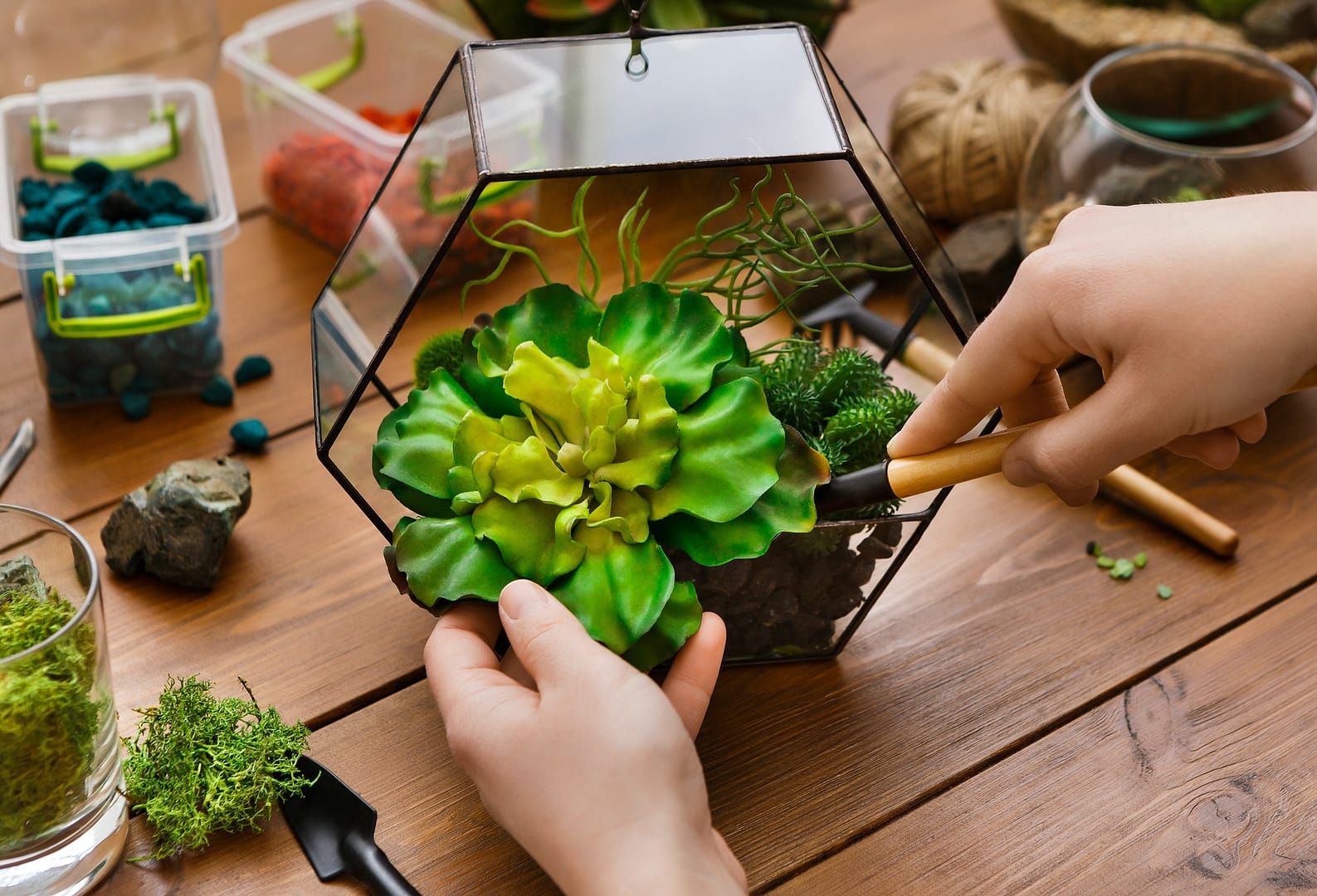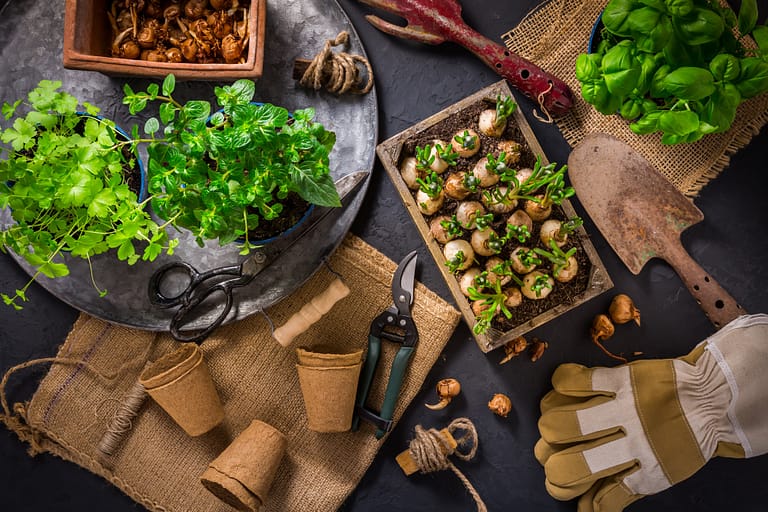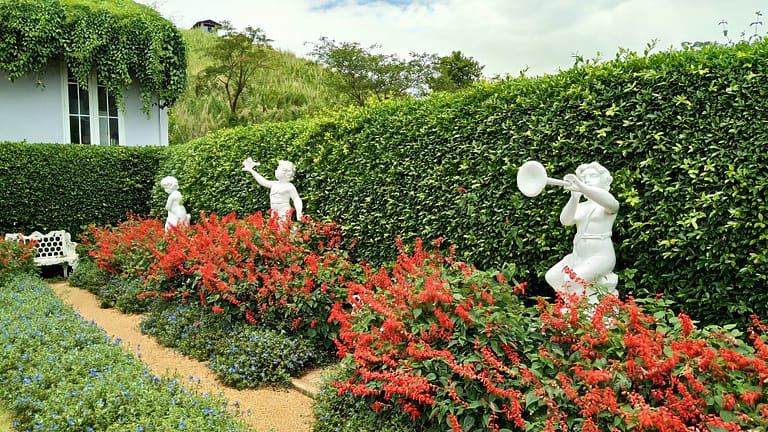Drought-Tolerant Dallas Gardens
Are you interested in creating a thriving garden in Dallas without using too much water? Drought-tolerant Dallas gardens could be the ideal choice. These gardens focus on using native plants and water-efficient landscaping to help you have a beautiful garden while also supporting sustainability.
By carefully planning the design and selecting suitable plants, you can significantly lower water usage and maintenance needs, ensuring a safe and sustainable outdoor area. Embracing drought-tolerant practices not only helps conserve water but also enhances the resilience and beauty of your landscape.
Key Takeaways
If you want to create a thriving garden in Dallas without using too much water, consider drought-tolerant gardens. These gardens focus on using native plants and water-efficient landscaping to help you have a beautiful garden while also supporting sustainability. Careful planning of the design and selection of suitable plants can significantly lower water usage and maintenance needs, ensuring a safe and sustainable outdoor area. Embracing drought-tolerant practices not only helps conserve water but also enhances the resilience and beauty of your landscape.
Understanding Dallas's Dry Climate
Understanding the dry climate in Dallas is crucial for gardening success. When planning your garden, it's important to choose plants that can withstand drought conditions. This means opting for plants that are tolerant to drought and implementing water-saving methods. Given the ongoing drought in Texas, it's essential to use landscaping techniques that conserve water.
To thrive in Dallas's arid environment, consider reducing the size of your lawn and replacing water-intensive grass with alternatives like buffalo grass or frog fruit. It's also vital to include native or adaptive plants that are well-suited to the climate and soil conditions of the region.
Designing a Water-Efficient Landscape
When you design a water-efficient landscape, it's important to consider xeriscaping to reduce water usage.
Choosing native plants can help you create a yard that can tolerate drought.
You should also look into different irrigation system options for efficient water distribution.
This approach not only conserves water but also helps in maintaining a sustainable and eco-friendly outdoor space.
Xeriscaping for Water-Efficiency
Creating a water-efficient landscape involves choosing drought-tolerant plants and ground covers to minimize water usage. This is especially important in Texas, where dry spells are common. By selecting native or adaptive plants like frog fruit or buffalo grass, you can build a sustainable landscape that thrives in Dallas's climate while conserving water.
It's essential to consider the water needed for maintaining your garden and plan accordingly. Additionally, implementing water-efficient landscaping practices, such as reducing lawn size and managing runoff water, can significantly contribute to water conservation efforts.
Remember to water deeply in the mornings on designated days to further support a drought-tolerant garden.
Native Plants Selection
When creating a water-efficient landscape for your Dallas garden, it's important to choose native plants that are well-suited to the region's climate and need minimal watering. Select plants with drought tolerance and low maintenance to ensure a thriving, sustainable garden.
Ground covers like frog fruit, muhly grass, and liriope are great options to reduce lawn area and save water. These ground covers not only enhance the look of your garden but also play a crucial role in maintaining a drought-tolerant landscape.
When picking native or adaptive plants, consider options such as live oaks, vitex, autumn joy sedum, blue salvia, and Mexican feather grass. By incorporating these plants into your garden, you can establish a beautiful, low-maintenance landscape that flourishes in Dallas' climate while conserving water resources.
Irrigation System Options
When planning a water-efficient landscape, consider using a drip irrigation system. This system delivers water directly to the plant base, reducing evaporation and runoff. It also helps minimize weed growth and disease by keeping water off the foliage.
In North Texas, where water conservation is vital, a drip irrigation system can save water and ensure your plants get the necessary moisture. You can further optimize water usage by equipping the system with a timer and moisture sensor.
Proper maintenance and leak prevention during installation are essential to avoid water wastage. By choosing a drip irrigation system for your drought-tolerant landscape, you can conserve water and promote plant health.
Selecting Native and Adaptive Plants
When choosing plants for your garden in Dallas, it's important to consider native species. These plants are well-suited to the local climate and soil, promoting a sustainable garden that needs minimal water and upkeep for long-term success.
Incorporating adaptive plants into your landscape can help you create a beautiful and eco-friendly garden.
Native Plant Benefits
When facing drought and extreme temperatures, it's best to choose native or adaptive plants for better survival. Canopied trees like live oaks, ornamental plants like vitex, and drought-tolerant perennials such as autumn joy sedum are great options for the Dallas climate. These plants can thrive in full sun, making them excellent choices for your plant beds.
Additionally, drought-tolerant plants like desert willows or bald cypresses not only enhance the aesthetic appeal of your yard but also support a sustainable and environmentally friendly landscape. Consulting with a professional landscape designer can help you select the most suitable native and adaptive plants for your specific yard and needs.
Choosing Adaptive Species
Choosing the right plants for a Dallas garden that can withstand the extreme temperatures and limited water availability is essential. It's important to select plants specifically labeled as drought-tolerant when considering adaptive species.
Consulting local landscape designers or nurseries can ensure that the chosen plants are suitable for the local climate. Opting for drought-tolerant plants not only ensures the garden's survival during dry spells but also supports water conservation efforts.
Additionally, it's advisable to consider the curb appeal of the plants selected. Look for a variety of textures, colors, and sizes that will provide visual interest and enhance the overall aesthetic of the landscape.
Taking these factors into account will help create a vibrant, sustainable garden that thrives in the Dallas climate.
Implementing Water-Saving Techniques
Saving water in your Dallas garden is essential for sustainability and cost-effectiveness. One way to do this is by reducing the size of your lawn and replacing it with drought-tolerant plants or gravel areas. These plants require minimal watering once they're established.
Another water-saving technique is to incorporate a water feature, such as a small pond or fountain, that recirculates water to minimize usage. You can also use excess water on your property to water your landscape and redirect runoff water to flower beds using swales or dry creek beds to retain and distribute water effectively.
Furthermore, collecting rainwater in catchment systems for supplemental watering reduces dependence on additional water sources. Additionally, watering in the morning and deeply on allowed days ensures efficient water usage for your landscape.
These strategies not only conserve water but also contribute to the safety and sustainability of your garden.
Maintaining Drought-Resistant Gardens
Maintaining a drought-resistant garden in Dallas is essential for conserving water and keeping your landscape vibrant.
Regularly check and fix any leaks in your irrigation system. Look for broken or clogged sprinkler heads and ensure that water is distributed evenly.
Monitoring the soil moisture levels is crucial to avoid overwatering or underwatering your drought-tolerant plants. To retain soil moisture and prevent weed growth, mulch around your plants.
Regular pruning helps remove dead or diseased branches, promoting healthy growth and a beautiful landscape with green foliage.
Consider using water-efficient drip irrigation systems to ensure your plants get the water they need without wastage. Additionally, capturing and storing rainwater using rain barrels can be beneficial.
Showcasing Drought-Tolerant Plant Varieties
If you have a garden in Dallas, you can grow a variety of plants that can withstand drought conditions. These include canopied trees like live oaks and red oaks, ornamental plants such as vitex and desert willows, and perennials like autumn joy sedum and blue salvia. Palm trees are also a great addition, thriving in the Dallas climate and adding a tropical feel to your garden. For a burst of color, consider purple-flowered plants like Mexican bush sage or butterfly bush. Additionally, pink-flowered options such as pink muhly grass and pink skullcap can create a vibrant and calming atmosphere in your outdoor space.
Here's a helpful table to assist you in choosing the perfect drought-tolerant plant varieties for your garden:
| Plant Variety | Characteristics |
|---|---|
| Live Oaks | Canopied, drought-tolerant |
| Red Oaks | Canopied, drought-tolerant |
| Vitex | Ornamental, drought-tolerant |
| Desert Willows | Ornamental, drought-tolerant |
| Autumn Joy Sedum | Drought-tolerant perennial |
| Blue Salvia | Drought-tolerant perennial |
| Palm Trees | Drought-tolerant, tropical |
| Mexican Bush Sage | Purple-flowered, drought-tolerant |
| Butterfly Bush | Purple-flowered, drought-tolerant |
| Pink Muhly Grass | Pink-flowered, drought-tolerant |
| Pink Skullcap | Pink-flowered, drought-tolerant |
Embracing Sustainable Garden Practices
When it comes to gardening, it's essential to consider sustainable practices. By incorporating techniques that are drought-tolerant and conserving water, you can contribute to environmental stewardship and resource conservation.
To create a drought-tolerant front yard, one approach is to reduce the size of the lawn and replace it with landscaped plant beds or areas covered in gravel. Using ground covers like frog fruit or buffalo grass, which are drought-tolerant, can help lower water usage while still maintaining an attractive landscape.
Another strategy is to collect rainwater in catchment systems for supplemental watering. Seeking guidance from professional landscape designers can ensure successful implementation of sustainable garden practices tailored to your specific needs.
Frequently Asked Questions
What Is Drought-Tolerant Landscaping in North Texas?
In North Texas, drought-tolerant landscaping is vital for conserving water. This type of landscaping involves reducing lawn size, using native plants, and xeriscaping for low maintenance. It also includes preparing the soil, using efficient irrigation, and selecting heat-tolerant plants for a well-designed landscape that can withstand drought conditions. By employing these strategies, homeowners can create beautiful and sustainable outdoor spaces while minimizing water usage.
What Are Examples of Drought-Tolerant Landscaping?
When you're planning a drought-tolerant landscape, you can opt for low-maintenance and water-saving succulent arrangements. It's also a good idea to choose native plants like live oaks and lantana because they can adapt well to the local conditions. Additionally, you can benefit from xeriscaping by reducing the size of your lawn and using rainwater. These strategies will help you create a beautiful and sustainable landscape that requires less water.
How Do You Make a Garden Drought-Tolerant?
Making your garden drought-tolerant involves simple yet effective techniques. Deep watering in the morning, choosing native plants through xeriscaping, and improving soil for better water retention are key steps. These methods not only help in conserving water but also contribute to creating a resilient landscape. For instance, deep watering allows the roots to grow deeper, making plants more resilient during dry periods. Additionally, native plants are naturally adapted to the local climate, requiring less water and maintenance. Improving soil with organic matter like compost can enhance its ability to retain water, reducing the need for frequent irrigation. By implementing these strategies, you can create a beautiful and sustainable garden that thrives even in drier conditions.
What Evergreen Shrubs Are Drought-Tolerant in Texas?
When landscaping in Texas and aiming for water efficiency, consider using evergreen shrubs such as Barberry and Autumn Sage. These plants are hardy and can thrive in dry conditions, making them excellent choices for xeriscape designs and succulent gardens. Additionally, their ability to withstand drought conditions makes them ideal for Texas's climate.







